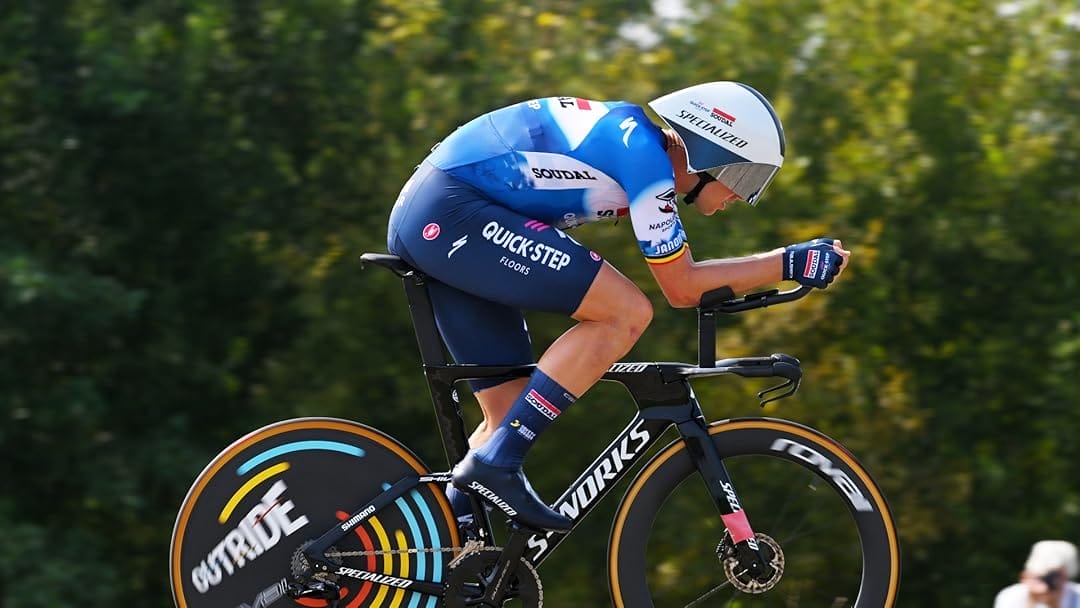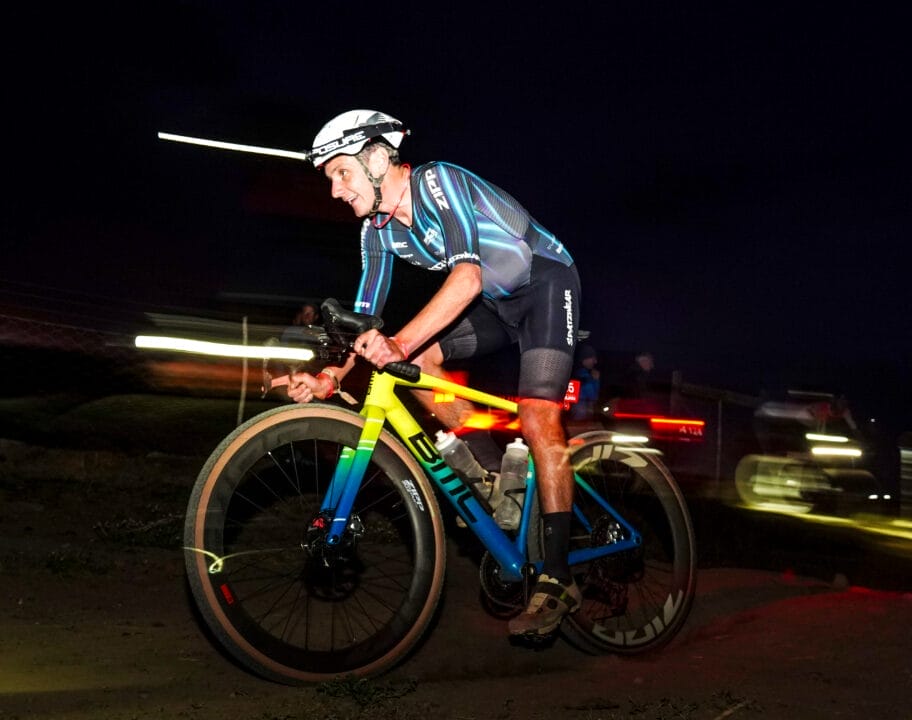At the end of June 2025, the UCI announced a range of cycling rule changes that sparked plenty of debate, outrage and controversy. Having let the dust settle – and the keyboard warriors’ rage shift focus – here is Cycling247’s take on the updates.
Slower is safer, right? Why the UCI have brought in the rule changes
As a pretext for the cycling rule changes, the UCI has been working along the mindset that slower racing is safer racing. Their take: speed = danger. Whether or not that is the case, we will address that later. But this logic, combined with input from a consultancy group called SafeR, led to the below rulings, set to be enforced from 2026 in mass start cycling races.
1. Maximum rim depth
Rule explained: Wheel rim depth will now be capped at 68mm, meaning speed-focused wheelsets, such as the ever-iconic Zipp 808s are no longer legal for mass start races.
CYCLING247 take: Rarely used within the pro peloton due to the weight penalty that these wheels have, deep rims like these aren’t the go-to choice of the peloton and thus the main source of high speeds anyway. So this ruling will surely not have the slowing effect that the UCI is aiming for, and maybe needs further thought. That said, lower rims are safer in crosswinds as they’re susceptible to interference, so there’s at least one win here.
2. Minimum handlebar widths
Rule explained: When the rules come into force, handlebars can’t narrower than 400mm outside-to-outside on the drops and 320mm hood-to-hood. With more and more pro riders opting for the aero gains of narrower bars, this rule is meant to slow things down and improve handling in tight pelotons.

CYCLING247 take: You’ve probably read that bar width is not exclusively related to drag and handling, but it is also a big part of all-day comfort. This rule disproportionately affects those who are smaller – men and women – with the likes of Visma’s women’s team suggesting that 16 of their 18 riders will have to choose wider handlebars.
We’re not sure how a blanket width such as this is anything but discriminatory to women and smaller riders (with some sources suggesting that 65% of the women’s pro peloton will have to size up on bars). Why not link bar width to shoulder width instead? With the women’s peloton having a quieter voice in this argument, we hope the UCI listens.
From an industry perspective, the narrowest allowed setups will now require new bar designs – including uncomfortable 2-degree flares, ergonomically a hard angle for a rider’s wrist. This will also create supply headaches while the industry is still reeling from post-COVID oversaturation of the market. This ruling feels short-sighted from the UCI.
3 – Maximum fork and seat stay width
Rule explained: Recent bike design has seen that wider forks and stays reduce dirty airflow during high speeds and thus reduce drag. The UCI will now cap the maximum internal width of forks at 115mm and seat stays at 145mm.
CYCLING247 take: A recent step forward within the industry to create cleaner air movement over the wheels, has seen them go one of two ways. Either bringing the forks / seat stays super close to the wheels, or engineering them super wide with a lot of clearance. Looking at the recent launch of the unnamed prototype from Factor, this is the most obvious push towards going wider to go faster. Whether or not this bike (or the Hope HB.T) falls foul to the ruling is still to be found out. But nonetheless, this is another blow to R&D efforts that are already deep in progress in an already struggling industry.
With a traditional product cycle of 4 years, UCI’s 2026 deadline means some bikes already in development could now be shelved.
4. Helmet protocols
Rule explained: The UCI will now ban time trial and triathlon helmets in mass start events – though it hasn’t fully explained the rationale. However, as we see more and more road riders opting for TT lids in 2025 already, the aim of this rule change is slightly more evident with new safety regulations cited as the reasoning.

CYCLING247 take: Whether you love or hate the look of time trial helmets in road racing, improved helmet safety is never a bad thing. A little clarity on this one wouldn’t hurt though.
Is slower actually safer?
Bike racing is dangerous, that is a fact. Crashes happen, and we take our hats off to the UCI for pushing to improve safety. But their assumption that slower equals safer doesn’t get the full story.
We’ve heard whispers of potential gear restrictions being introduced to pro races as the next step down this road. But if you’ve watched any junior or amateur race, you’ll know crashes still happen – even at lower speeds. Recent research has found that rider error – not velocity – is the main cause for crashes: misjudging a gap, the width of the road, or not being fully awake when the peloton slows.
Add to this the fact that when you have limited oxygen in your brain, mixed with a do-or-die racing mentality, crashes are inevitable at any speed when prizes are on the line. That’s the physiological reality.
Rather than looking at the wrapping paper and the small number of km/h gained through very expensive research and development by a struggling bike industry. The UCI should look at road conditions, better course planning and ways to reduce the size of the peloton. Fewer traffic-calming systems popping up on road courses and less fighting for position could reduce crashes – regardless of handlebar width or rim depth.
And whatever these rules are, let’s ensure these changes don’t disproportionately impact those already underrepresented in cycling. Cycling is already too male, too white, too middle class and too middle-aged.
So, dear UCI, if you are going to revise any of your recent rules, start with handlebars: let smaller riders – especially women – use bars that actually fit them.




